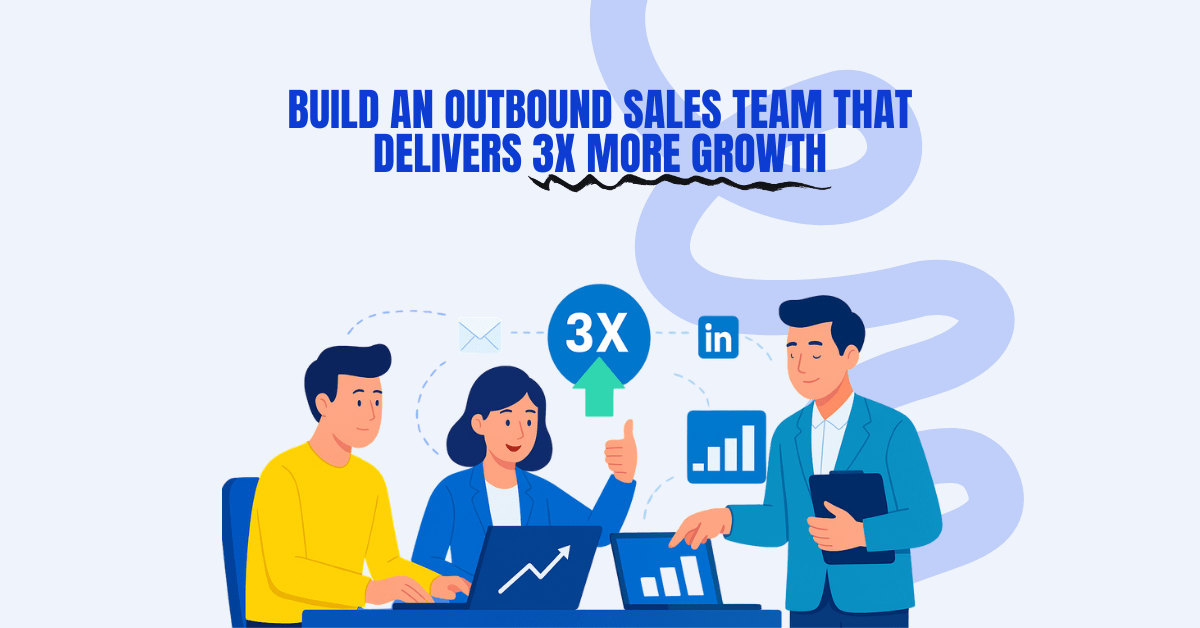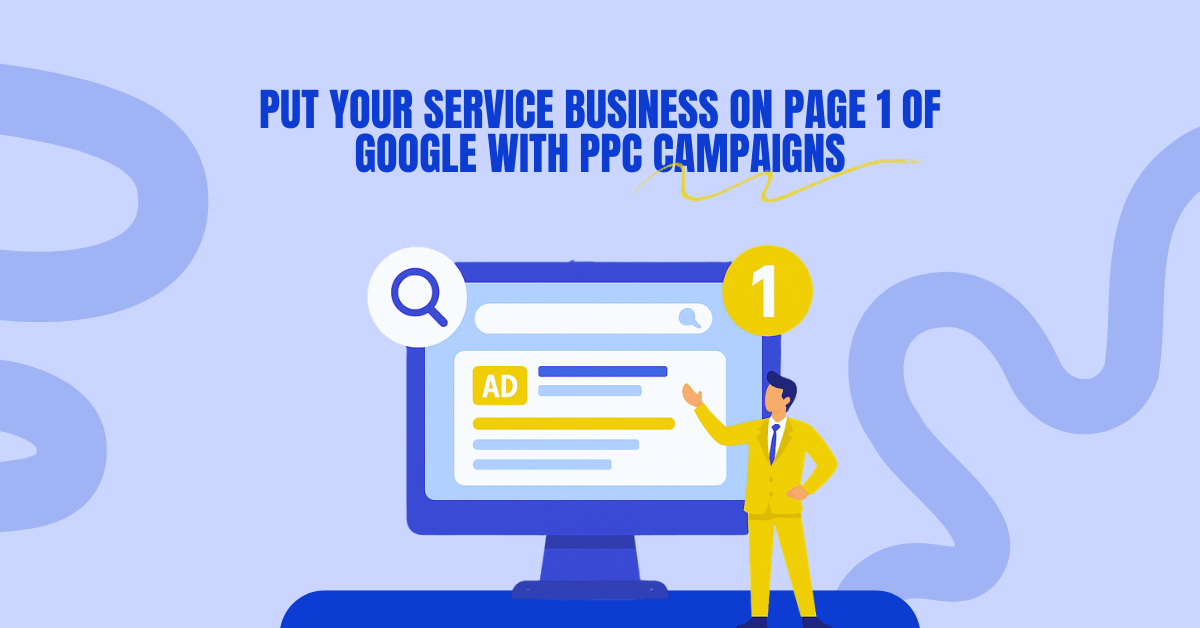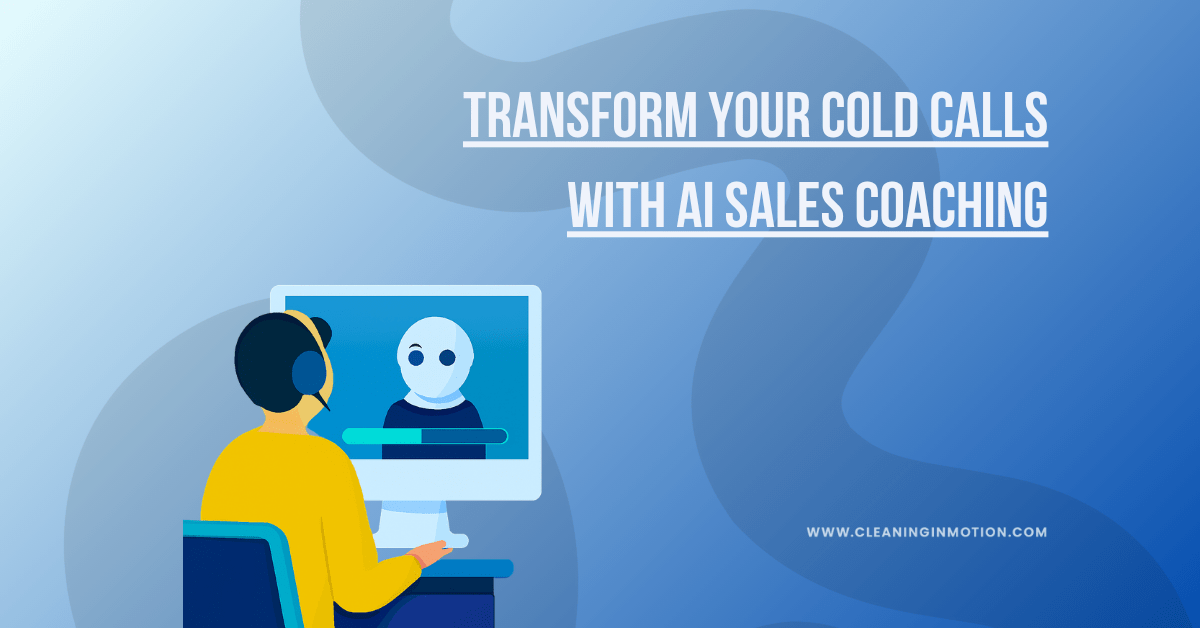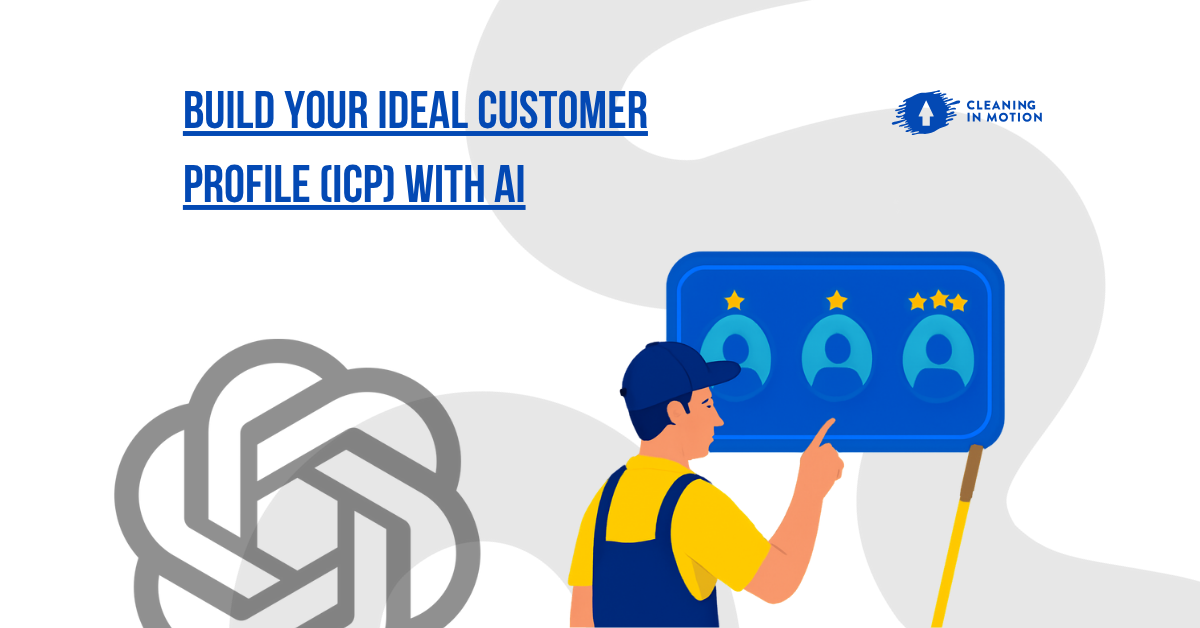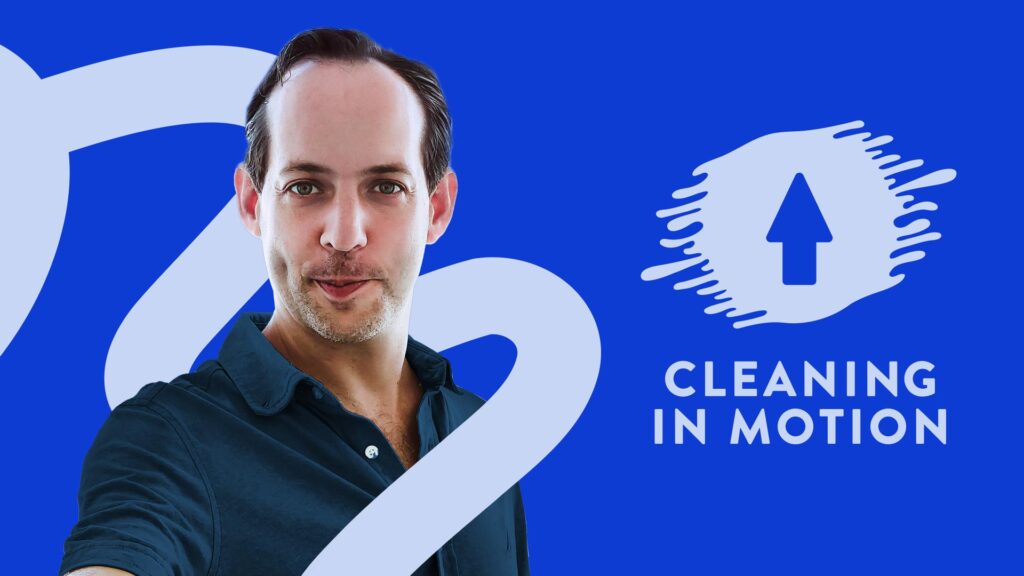Building a High-Performing Outbound Sales Team for Commercial Service Growth
It is no surprise that commercial service businesses, especially in the cleaning, HVAC, and facility management sectors, face one of the longest and most complex sales cycles out there. Multiple stakeholders, extended decision-making processes, and long waits before conversion can make outbound marketing feel like pushing a boulder uphill. But what if you could make that boulder a little lighter?
Outbound Marketing in 2025: The Stats You Can’t Ignore
Before we dive into the hows, let’s take a look at the why. The numbers speak for themselves:
- 76% of buyers are willing to meet with sellers who reach out first.
- Only 18% of companies are consistently running outbound campaigns.
- 3X higher response rates with multi-channel outbound compared to using just one channel.
Here at Cleaning in Motion, we’ve seen firsthand how consistent outbound strategies drive results. In fact, we book an average of 34 appointments a month using outbound efforts alone—and that’s just the start. We’ve added $80,675 in recurring revenue through strategic outbound outreach. And these aren’t just numbers; they’re proof that outbound is a powerful tool when used right.
Why Do Most Businesses Fail at Outbound?
So why do so many businesses fail at outbound marketing, even when the numbers suggest it’s a goldmine?
There are several known mistakes that can cripple your outbound efforts. Let’s break them down:
- Targeting the wrong people: Not all leads are created equal. If you’re selling cleaning services, not every business is a good fit. Maybe a church reached out asking for janitorial cleaning, but they don’t meet the minimum cleaning frequency you need.
- Lack of industry-specific messaging: You can’t use a generic sales pitch and expect different industries to respond the same way.
- No systems or processes: Random prospecting doesn’t work. You need a method, a system to track leads, and accountability.
- Single-channel thinking: Email alone isn’t enough. Cold calls and LinkedIn outreach are also crucial to building relationships and trust.
- Poor quality data: You can’t hit a target if you don’t know where it is. Bad data leads to wasted time and frustration.
- Owner-dependent sales: Many commercial service businesses rely heavily on the owner’s personal network, relationships, and referrals to drive new business. While this might work in the early stages, it becomes a major bottleneck as the company grows. Without a repeatable, scalable outbound system, growth stalls the moment the owner steps back from sales.
At Cleaning in Motion, we’ve made these mistakes, and learned from them. Now, we approach outbound with a multi-channel, well-structured system that has proven results.
Now that you understand the mistakes to avoid, it’s time to develop the right mindset for outbound prospecting. After all, success isn’t just about the tools and techniques you use; it’s about how you approach the process.
Fanatical Prospecting Mindset: Get Comfortable with Rejection
If there’s one thing we’ve learned from years of experience, it’s this: rejection is inevitable, but in the outbound marketing world, you can turn it into your best friend.
Let’s face it: prospecting every day (no matter how you feel) is what separates the winners from the losers. Rejection rates? They’re high. But they’re part of the game. Here’s the reality:
- 500 calls = 1-5 meetings = 1-2 deals
- 60% of customers say “no” four times before they say “yes.”
- 92% of salespeople give up after the 4th rejection.
And you know what? That 8% of persistent reps are closing 80% of all sales. So yes, the rejection math is tough, but it’s what you do after the “no” that counts.
Now that you’re mentally prepared to handle rejection, let’s focus on targeting. After all, who you target is just as important as how you prospect.
Building Your Ideal Customer Profile (ICP)
Here’s where it gets interesting: you’re not just selling to anyone, you’re selling to the right person at the right company. And that’s where your Ideal Customer Profile (ICP) comes in.
Think about it—80% of commercial service companies target the wrong decision-makers. That’s a lot of wasted time and money. So, how do you avoid that? Focus on these key factors:
- Decision-Maker Intelligence: Who makes the decisions? What’s their pain? What drives them? The more you know, the better you prospect.
- Targeting the right industries: Not every industry needs your services. Be strategic.
At Cleaning in Motion, we’ve invested heavily in tools like Apollo.io, Lusha, and LinkedIn Sales Navigator to help us identify the right prospects, and then we personalize our messaging for them.
With your ICP in mind, let’s move on to how you can reach these prospects effectively. Because having the right message is useless if you’re not reaching them the right way.
Multi-Channel Approach: Email, LinkedIn, and Cold Calling
Here’s the secret: don’t rely on just one channel. A multi-channel approach is how you reach the right decision-makers and build the relationship over time.
- Cold Email: When done right, cold email is an incredibly effective tool. Success in cold emailing isn’t just about hitting “send.” It’s about crafting personalized, relevant messages that speak directly to the recipient’s needs. Follow-up emails matter, too. Statistically, persistent follow-ups increase conversion chances.Use tools like Instantly.io to automate and personalize emails. Keep your messages short and to the point. Remember: you’re not selling, you’re starting a conversation.
- LinkedIn: LinkedIn is a goldmine for relationship-building. Engage with your prospects on LinkedIn by liking their posts, commenting on their content, and starting a genuine dialogue. Don’t just spam connection requests; make your outreach feel human and thoughtful.Send connection requests with a message that adds value. Offer insights, share a helpful resource, or make a relevant observation about their business.
- Cold Calling: Yes, cold calling still works. It’s one of the most direct and personal ways to engage prospects. The key to effective cold calling? Objection handling. Be prepared to pivot the conversation, qualify the lead on the spot, and move it forward.Develop a call script that doesn’t feel scripted. Focus on qualifying questions and listening more than talking. The goal is to build a connection, not just pitch your service.
To optimize your cold email strategy, you’ll need the right tools. Next, we’ll dive into the tech stack that can take your outbound efforts to the next level.
Cold Email Tips and Tech Stack
If you’re looking to optimize your cold email strategy, you need the right tools. Here’s the tech stack we recommend:
- Instantly.io: For automating and personalizing emails at scale.
- Clay.com: To ensure your emails hit the inbox and get attention.
- ZeroBounce & Verifalia: For deliverability testing, because if your emails aren’t getting through, you’re not going to see any results.
Pro tip: Personalization at scale is key. Your email might be sent to hundreds, but it should feel like it was written just for one person.
Let’s discuss how you can structure your sales development team for success. We’ll look at the roles that make an outbound team truly high-performing.
Sales Development (SDR) vs Business Development (BDR)
To truly succeed at outbound, you need a systematic approach. And that starts with clearly defining the roles of your Sales Development Representatives (SDRs) and Business Development Representatives (BDRs).
- SDRs focus on high-volume activity and initial outreach. Their job is to fill the pipeline with qualified leads.
- BDRs handle the warm leads, take over when there’s interest, and work to close deals.
Consider a commercial cleaning company aiming to expand its client base. An SDR might reach out to businesses that have shown interest in cleaning services, qualify them based on their needs, and set up meetings. Meanwhile, a BDR would identify new industries or markets that haven’t been tapped yet, initiate contact, and establish long-term relationships to secure future contracts.
Building and Scaling Your Outbound Department
As your business grows, so should your outbound team. Here’s how to build an effective sales team:
- Hire strategically: Look for resilience, adaptability, and strong communication skills. These are the traits of top-performing SDRs and BDRs.
- Implement a 4-bucket lead management system: From uncontacted leads to scheduled meetings, every lead should have a clear stage in your pipeline.
- Resilience: Sales roles often involve rejection. Hiring individuals who can persevere and maintain motivation is crucial.
- Adaptability: The sales landscape can change rapidly. Employees who can adapt to new tools, strategies, and market conditions will thrive.
- Strong Communication Skills: Effective communication is at the heart of sales. Look for candidates who can articulate value propositions clearly and build rapport with potential clients.
To put this all together, let’s look at how to create a structured lead management system that ensures no lead gets left behind.
The 4-Bucket Lead Management System:
A structured approach to lead management ensures that no lead is neglected and that resources are allocated efficiently. Here’s how you can categorize leads:
- Uncontacted Leads: These are prospects who have been identified but not yet reached out to. They are at the top of the funnel and require initial outreach.
- Contacted Leads: Prospects who have been reached out and showed some interest, but haven’t booked an appointment yet.
- Qualified Leads: Leads that have shown interest and meet your ideal customer profile, or are a past opportunity worth reactivating. These are the prospects that SDRs and BDRs should focus on nurturing.
- Converted Leads: Prospects who have been successfully closed and converted into clients. They should be handed over to the account management team for onboarding and relationship building.
Imagine your commercial cleaning company has identified a list of 100 potential clients. Initially, these are uncontacted leads. After outreach, 40 respond, moving them into the contacted bucket. Through qualification, 20 meet your criteria, becoming qualified leads. Finally, 5 sign contracts, converting them into clients. This structured approach helps in tracking progress and ensuring consistent follow-up.
Putting It All Together: Building a Repeatable Outbound Process
Outbound marketing isn’t for the faint of heart, but if you approach it with a disciplined mindset, use the right tools, and target the right prospects, it can transform your business.
The key is consistency. Make prospecting a daily habit, embrace rejection, and always follow up. If you’re ready to take your outbound strategy to the next level, schedule a consultation with us at Cleaning in Motion today.
